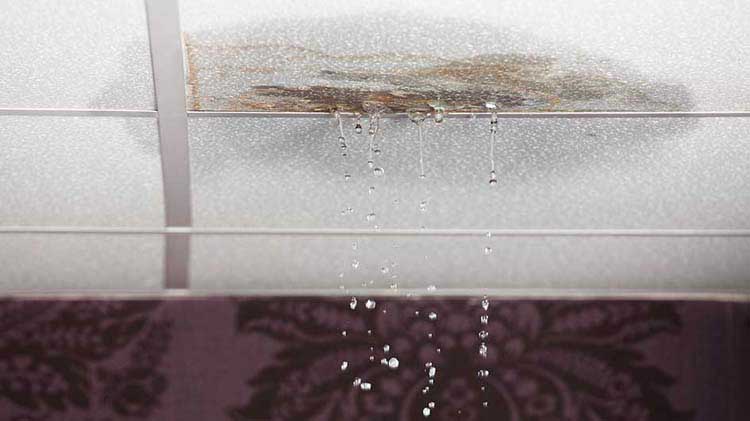They are making several great points on the subject of Most Common Causes of Leaky Pipes in general in this article just below.

Leakages not only trigger waste of water but can likewise trigger unnecessary damage to your house as well as promote unwanted natural growth. Water leakages may go undetected considering that most of the pipework in our home is concealed. By looking and understanding for everyday situations that cause leaks, you can protect your home from future leakages as well as unneeded damages. Today, we will check out six leakage causes that might be creating your pipes to trickle.
Elbowing in roots
Most water leaks start outside the house instead than inside it. You could discover damp spots or sinkholes in your yard, and that may mean that tree origins are invading water lines triggering water to seep out.
Rusty water systems
As time passes by, your plumbing system ages as well as deterioration such as rust may start gnawing the pipes. This might be the root cause of staining or bending on your pipes. This requires an evaluation with your plumber instantly. Consider changing the pipes considering that they are at a higher danger of rust than the more recent versions if our plumbing system is old.
Faulty Pipe Joints
The point at which your pipes attach is frequently the weakest web link in the waterline. Pipeline joints can degrade gradually, causing water leakages. Unfortunately, most of pipe joints are not quickly visible. If you have noisy pipelines that make ticking or banging noises, specifically when the hot water is switched on, your pipeline joints are possibly under a great deal of pressure. It is suggested to have your plumber examine your system yearly.
Immediate temperature level adjustments.
Severe temperature level adjustments in our pipes can create them to expand and also contract unexpectedly. This expansion as well as tightening might trigger cracks in the pipelines, especially if the temperature are below cold.
Poor Water Connectors
At times, a leakage can be triggered by loose hoses as well as pipelines that provide your home appliances. Generally, moving is what creates the loosened water Connections. You may find in the case of a cleaning maker, a pipe might spring a leakage as a result of trembling throughout the spin cycle. In case of a water connections leakage, you may see water running directly from the supply line or pools around your appliances.
Blocked Drains
Clogged drains could be aggravating and inconveniencing, however they can in some cases end up triggering an overflow leading to burst pipes. Maintain getting rid of any type of materials that may drop your drains that can block them to prevent such troubles.
All the above are root causes of leakages yet not all water leaks result from plumbing leakages; some leaks could originate from roof leakages. All leaks should be repaired promptly to prevent water damages.
Leakages not just create waste of water however can likewise trigger unnecessary damages to your house and also promote undesirable natural development. By looking and understanding for daily scenarios that create leaks, you can shield your home from future leakages as well as unnecessary damage. Today, we will look at six leak creates that may be triggering your pipes to drip.
At times, a leakage can be caused by loose pipes as well as pipelines that supply your appliances. In case of a water connections leakage, you may see water running directly from the supply line or puddles around your home appliances.
How To Check For Water Leak In Your Home
How To Check for Leaks
The average household's leaks can account for nearly 10,000 gallons of water wasted every year and ten percent of homes have leaks that waste 90 gallons or more per day. Common types of leaks found in the home are worn toilet flappers, dripping faucets, and other leaking valves. These types of leaks are often easy to fix, requiring only a few tools and hardware that can pay for themselves in water savings. Fixing easily corrected household water leaks can save homeowners about 10 percent on their water bills.
To check for leaks in your home, you first need to determine whether you're wasting water and then identify the source of the leak. Here are some tips for finding leaks:
Take a look at your water usage during a colder month, such as January or February. If a family of four exceeds 12,000 gallons per month, there are serious leaks.
Check your water meter before and after a two-hour period when no water is being used. If the meter changes at all, you probably have a leak.
Identify toilet leaks by placing a drop of food coloring in the toilet tank. If any color shows up in the bowl after 10 minutes, you have a leak. (Be sure to flush immediately after the experiment to avoid staining the tank.)
Examine faucet gaskets and pipe fittings for any water on the outside of the pipe to check for surface leaks.
Undetected water leaks can happen without the home or business owner even realizing. If you suspect a water leak, but not able to find the source. It is time to contact a professional water leak detection service, The Leak Doctor.
How To Find a Water Leak In Your Home
https://www.leakdoctor.com/blog/How-To-Check-For-Water-Leak-In-Your-Home_AE197.html

As a passionate reader on How to detect water leaks in your home, I figured sharing that piece of content was a smart idea. Are you aware of somebody else who is interested in the topic? Do not hesitate to promote it. Thank-you for taking the time to read it.
Rapid response assured.